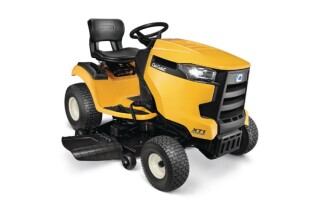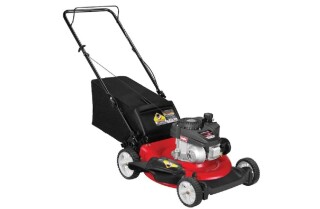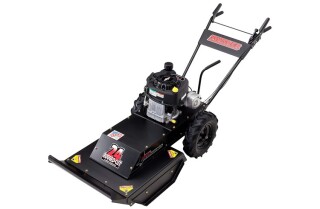Best Weed Killer: Make That Time-Consuming Chore Easier
-
Bayer Advanced 704140A All-In-One Lawn Weed Killer -
EcoSmart Technologies - Weed Killer -
Southern AG 2,4-D Amine Quart Selective Broadleaf Weed Killer -
Buyer's Guide
If you’ve ever spent an appreciable amount of time in a garden or dedicated your weekends to landscaping your property, you’ll know weeding is an essential (and time-consuming) chore. Let’s face it, who really wants to be bending over repeatedly to pull these ragged invaders from in between rows of vegetables and away from the sides of your walkways? A dedicated weed killer makes this unenviable task much easier, and depending on the type you choose, can have lasting effects which prevents weeds from returning for months and even years in some cases. We’ve selected some of the best weed killers on the market today as well as providing a weed killer buyer’s guide below to help you determine which type is best suited for your needs. Check this top list of the best weed killers in 2022.
Detailing the Best Weed Killers of 2022
Bayer Advanced 704140A All-In-One Lawn Weed Killer - Best Weed Killer Overall
For the best lawn weed killer that also kills crabgrass, Bayer Advanced 704140A All-In-One Lawn Weed and Crabgrass Killer Concentrate is the one for you. To be most effective, users have said to add a teaspoon full of liquid soap to the mix. This allows it to stick to crabgrass leaves for more effective control. You may need two or three applications to kill crabgrass, but broadleaf weeds will die after one application. It's rain safe after one hour, but no mowing for two days before and after application and apply after two or three days of rain or watering. There are other lawn weed killers available, but none work better than this.
EcoSmart Technologies - Weed Killer - Honorable Mention
This is a non-toxic weed killer, that contains natural and organic clove and peanut oils as its main weed killing ingredients. It is classified as a minimum risk formula and does not have to be registered as a plant killing compound. What all that means is that EcoSMART Organic Weed and Grass Killer takes a slightly different path to kill weeds than the top rated formulas, but it does the job effectively and safely. Although it is safe to use around kids and pets, there is no confirmation that it is safe to use around areas with water like ponds, creeks or other waterways.
Southern AG 2,4-D Amine Quart Selective Broadleaf Weed Killer - Consider
For the most economical broadleaf lawn weed killer, Southern AG 2,4-D Amine Weed Killer 32oz Quart Selective Broadleaf Weed Control 46.3% is your best bargain. It contains a whopping 46% of 2,4-D broadleaf weed killer, and that means you can use less and get the same effective results. It will control virtually all broadleaf weeds and many woody plants for full spectrum coverage, although it will not kill crabgrass. It's rain safe in 4 hours, and is applied with as a coarse spray.
Buyer's Guide
Prior to chemical use, weed killing was done by mechanical means. Pulling them by hand or tilling them under were the most common practices for getting rid of weeds. Essentially, had it not been for the agriculture of food plants, weed killing may have been an afterthought in society. But with the coming of the first chemical synthesized as an herbicide, called 2,4-Dichlorophenoxyacetic acid, and commonly abbreviated as 2,4-D, weed killing became an industry unto itself.
First manufactured in 1940, this chemical hormone quickly spread to homeowners who wanted a weed-free lawn. It worked by essentially stimulating a weed to grow so rapidly that the actual cell structure ruptured during growth. In fact, 2,4-D is one of the primary ingredients of the infamous herbicide used during the Vietnam War known as “Agent Orange”.
By the 1950's, when many city dwellers headed out to the suburbs, 2,4-D sales rocketed. Lawns were larger and homeowners wanted to keep weeds at bay, and by simply spreading a chemical onto their lawns, it became just that easy to rid back and front yards of dandelions and crabgrass.
Of course, food production also spiked during this time period as well. Farmers could now kill weeds quickly and effectively, yet keep crops unharmed, since 2,4-D targeted only broadleaf plants, many of which were classified in the “weed” category. No longer did farmers or hired hands have to spend day after day plucking weeds between plant rows. A weed killer could be applied by machine over the course of a few hours, and the results were lasting. A few applications per growing season kept weeds at bay while crops flourished.
Weed Killer Types
There are 4 basic weed killing types, or herbicides as they are called, and each of them have their own unique property being emergence, selectivity, persistence, and contact/translocation. Each work in different ways, and you must decide which type is right for your needs.
Emergence
Depending upon the specific type, these herbicides work before, during and after a weed emerges. A pre-emergence herbicide should be applied a week or two before any weeds are seen. An emergence herbicide should be applied just as the weed begins coming out of the soil, and a post emergence herbicide is designed to kill a weed after it is already growing. All weed killers fall into one of these categories.
Selectivity
These herbicides target specific types of weeds, and can be used in or around other plant growth (like lawns and crops for instance) without adversely affecting them. For example, in this classification, certain types of weed killer may only target dandelions to the exclusion of any other plant life. They can be spread confidently onto a lawn, and only dandelions will be affected.
Conversely, a non-selective herbicide will kill virtually any plant it comes into contact with and for killing large areas of undesirable growth, a non-selective weed killer would be your best bet.
Persistence
Persistence essentially means how long weeds will be killed after a herbicide application. Non-persistent weed killers will not last longer than the day after application. On the other hand, persistent types can be made to kill weeds for extended periods after the initial application. If you want an area to be free of weeds for any length of time (such as pathways) a persistent weed killer would work best for this type of application.
Contact and/or Translocated
Contact weed killers only kill the part of the weed that it has been applied to. Translocated weed killers work their way down to the root system after application, effectively killing the entire plant. These types are very common for spot weed removal.
Chemical Substances
There are over 50 different chemical substances used to kill weeds, and more are being formulated yearly. Although effective, all of the synthetic manufactured types must be used with caution. Gloves and a respirator should be used during application, and for contact control, make sure that overspray does not touch other desired plant types.
Chemical herbicides run the gamut of characteristics. They can be contact killers, emergence killers, some manufactured for a specific weed type meaning they are highly selective, and some will have a persistence factor lasting years. They are also inexpensive to use, but caution must be taken around waterways, ponds and rivers as they are highly polluting and will kill off desirable water vegetation and the surrounding aquatic wildlife.
The newest herbicides are made from natural or organic substances like citric acid, garlic, clove oil and vinegar. Generally, they are of the contact variety and they are completely non-selective, meaning that they will kill any plant they touch. However, these are the safest herbicides available today, and many can be used around kids and pets without harm.
Application
Pre-Mix Liquids
The most common types of pre-mix liquids are contact herbicides. You'll need a sprayer for these, as most need to be mixed with water and then sprayed on to be effective. These are very common for homeowner use, and very inexpensive for the amount used during application.
Pre-mix liquids are also popular for farmers. In this case, they are mostly used as pre-emergence types or selective weed killers during the growing season. Tanks of herbicide chemicals are mixed with water, than distributed by mechanical means while pulled behind a tractor.
Granular
These are the easiest to apply, and can be broadcast from a grass seed spreader. These are generally emergent types of herbicides, relying on the action of rain or artificial watering to dissolve the granules and activate them.
Ready Mixed Spray
A ready mixed spray is essentially ready to use right out of the bottle. In most cases, they are non-selective contact formulations, but some are also selective sprays targeting only a few types of weeds. These are the most expensive herbicides on the market, but since they are ready to use and no mixing is required, they’re the most hassle free types available.
What's Best for You
Weed killers have become so commonplace that you'll easily be able to find a type for your specific needs. They can be used virtually anywhere, the newest formulas are relatively safe, and if safety is your primary concern, you can use an organic or natural formulation. Some considerations on how and where to use weed killers are as follows:
Lawns
Selective granules work best. They can be distributed by any centrifugal kind of spreader, and many of these granular types are also mixed with fertilizer, which kills weed and stimulates grass growth. These granules will target weeds only and allow your grass to flourish. However, you may have to keep kids and pets off the lawn for up to 72 hours after application. Always read and abide by the restrictions as stated on the package.
Walkways
Emergent weeds between cracks can be spot targeted with a contact killer. For large areas, use a pre-mix and a yard sprayer. For smaller areas, a ready mixed spray bottle will suit your needs.
Pathways
A contact spray can be used for growing weeds, but for long lasting weed killing, use a pre-emergent granular. You can lay on a pre-emergent granular before you mulch the path, and if you mulch yearly, also lay down some pre-emergent granular each time. A highly persistent type would be perfect if you are constructing a pathway. You could broadcast it beneath the first layer of mulch, and you would not have to worry about sprouting weeds for years.
Mulch Beds
Much like pathways, if your mulch bed is for aesthetics only, a pre-emergent granular can be broadcast each time you mulch. A contact spray can be used for sprouting weeds.
Gardens
There are many synthetic herbicides that are certified for garden use. Most should not be sprayed near fruit, but there are both specific contact types and emergent types that can be used in a garden for weed control.
However, the safest and healthiest way to kill weeds in a garden are by pulling them out or tilling them under. If you must use a chemical weed killer here, the best choice is a natural or organic type.












